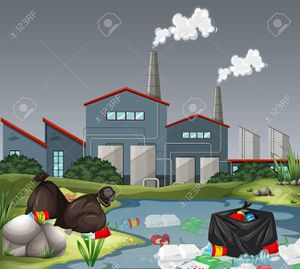ISSS608 2017-18 T3 Assign Aparajita Shukla
VAST MINI CHALLENGE 2:
Like a Duck to Water
|
|
|
|
Overview
Mistford is a mid-size city is located to the southwest of a large nature preserve. The city has a small industrial area with four light-manufacturing endeavors. Mitch Vogel is a post-doc student studying ornithology at Mistford College and has been discovering signs that the number of nesting pairs of the Rose-Crested Blue Pipit, a popular local bird due to its attractive plumage and pleasant songs, is decreasing! The decrease is sufficiently significant that the Pangera Ornithology Conservation Society is sponsoring Mitch to undertake additional studies to identify the possible reasons. Mitch is gaining access to several datasets that may help him in his work, and he has asked you (and your colleagues) as experts in visual analytics to help him analyze these datasets.
Mini-Challenge 2
Kaosis a furniture company was accused of causing environmental damage to Boonsong Lekagul Wildlife preserve by jettisoning hazardous chemical waste. However, Kaosis’ spokesperson refuses any such claims and holds that there isn’t any ground contamination near any remote ranger stations which as a surprise was also the conclusion of last year’s mini challenge.
This led the incensed ornithology professors of Mistford to take all matters into their own hands and they journeyed out to collect soil samples so as to perform soil analysis. However, to their disappointment they found out that the site looked like there had been recent excavation and building activities going on. Boonsong Preserve rangers later confirmed that a new ranger station was being built at that site! Soil samples taken from the site were inconclusive in detecting Methylosmolene (the toxic manufacturing chemical in the suspected dumping) or any other contaminant, as new top soil had been trucked in.
With this evidence gone, professors have come up with another way and have come forward with several years of water sensor readings from rivers and streams in the preserve. These samples were taken from different locations scattered throughout the area and contain measurements of several chemicals of possible interest.
Questions
As data detectives our task here is to investigate the hydrology data from across the Preserve and answer the following few questions:
Questions:
- Characterize the past and most recent situation with respect to chemical contamination in the Boonsong Lekagul waterways. Do you see any trends of possible interest in this investigation?
- What anomalies do you find in the waterway samples dataset? How do these affect your analysis of potential problems to the environment? Is the Hydrology Department collecting sufficient data to understand the comprehensive situation across the Preserve? What changes would you propose to make in the sampling approach to best understand the situation?
- After reviewing the data, do any of your findings cause particular concern for the Pipit or other wildlife? Would you suggest any changes in the sampling strategy to better understand the waterways situation in the Preserve?
